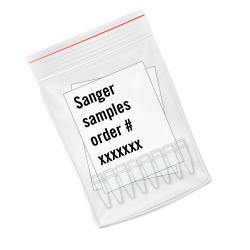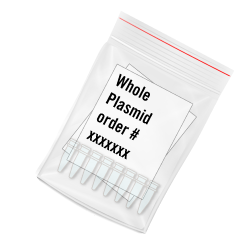Go to Sample Submission Guide and General FAQ >
Separate Different Sample Types
If submitting Whole Plasmid Sequencing and Sanger sequencing samples in one order, please separate the tubes into different bags and clearly mark each bag.
 | + |  |
Sample Preparation
| Sample type | Size Category | Length | Concentration | Min volume | Price per sample |
| Plasmid | Regular | 2.5 - 25 kb | 30 ng/uL | ≥10 uL | $15 |
| Large | 25 - 125 kb | 50 ng/uL | ≥20 uL | $30 |
| XL | 125 - 300 kb | 50 ng/uL | ≥40 uL | $60 |
| Linear/Amplicon | Standard | 600 bp - 25 kb | 30 ng/uL | ≥10 uL | $15 |
| Big | 25 - 125 kb | 50 ng/uL | ≥20 uL | $30 |
Nanocoins
The system will automatically identify if there are Nanocoins on your account and you can decide whether to use them or not after clicking 'add to cart'. For more information on Nanocoins, GO HERE.